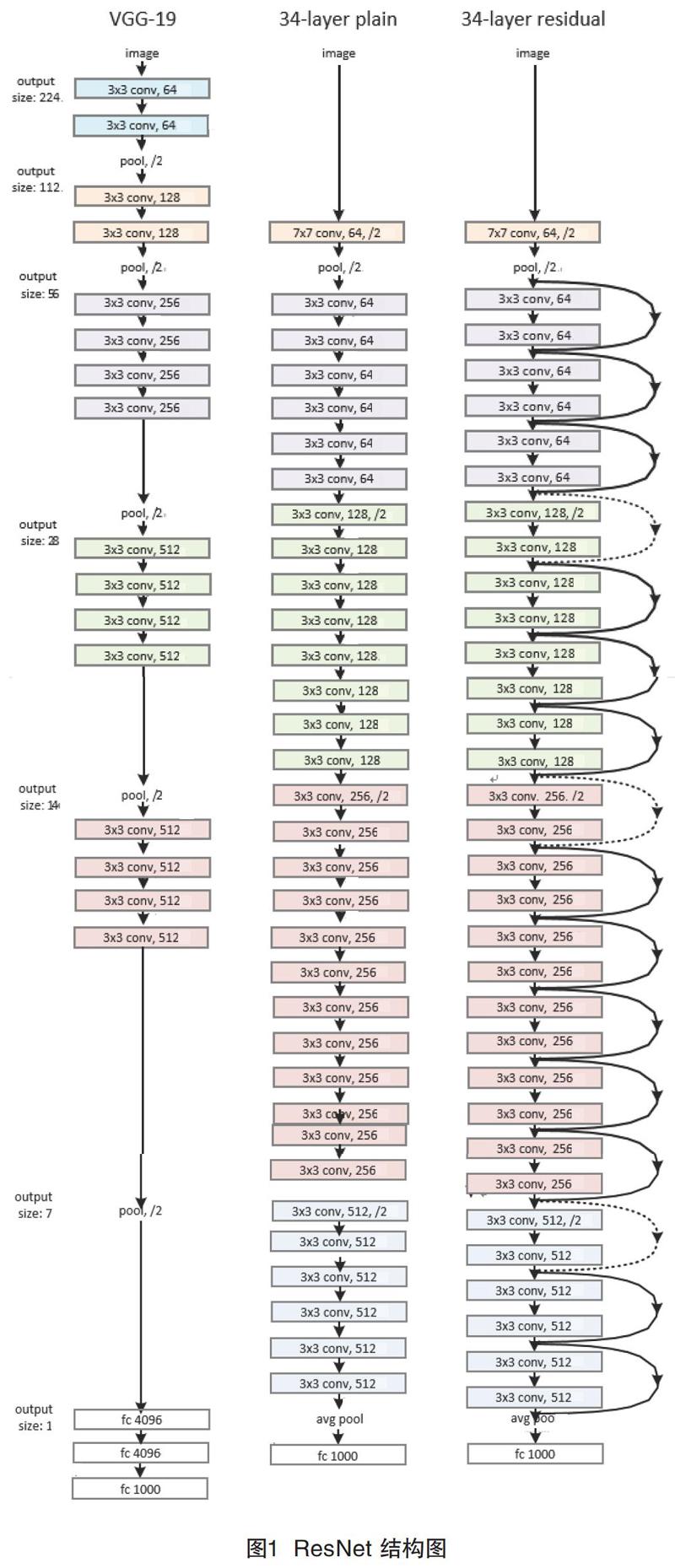基于ResNet50的人臉識別模型
謝鑫


摘? 要:該文采用卷積神經網絡(Convolutional Neural Networks, CNN)進行人臉識別模型開發,現有深度卷積神經網絡的模型,提出了改進的Faster R-CNN目標檢測模型與ResNet50結合的方法進行識別。ResNet50網絡大小適中,對算力要求不高,故可以采用訓練耗時較長的杜鵑算法(Cuckoo Search,CS)對原有的網絡訓練方法進行一定變更,在CelebA上進行訓練與預測。與未改進的ResNet50相比,其訓練時間有所增加但預測準確率上升1.7%。
關鍵詞:ResNet50? Faster r?cnn? Cuckoo Search? 人臉識別
中圖分類號:TP391.41? ? ? ? ? ? ? ? ? ? ? ?文獻標識碼:A? ? ? ? ? ? ? ? ? ?文章編號:1672-3791(2020)12(b)-0009-03
Abstract: This paper uses Convolutional Neural Networks (CNN) for face recognition model development. For existing deep convolutional neural network models, an improved Faster R-CNN target detection model combined with ResNet50 is proposed for recognition. The ResNet50 network is of moderate size and does not require high computing power. Therefore, the Cuckoo Search (CS) algorithm, which takes a long time to train, can be used to make certain changes to the original network training method, and train and predict on CelebA. Compared with the unimproved ResNet50, its training time has increased but the prediction accuracy has increased by 1.7%.
Key Words: ResNet50; Faster r?cnn; Cuckoo Search; Face recognition
Yann LeCun于1989年將CNN用于手寫數字識別, 近年來CNN也被廣泛用于人臉識別領域[1]。而在人臉識別領域除CNN外目前還有SVM、小波變換、圖像二值化等檢測方法[2]。
1? 原有網絡與初始化方法
HE Kaiming等人在2015年提出ResNet[3]系列網絡,結構圖見圖1。ResNet提出了一種能有效降低訓練過程中梯度消失和梯度爆炸問題的殘差模塊,其結構圖見圖2。
針對非線性激活函數ReLU、HE Kaiming等人提出了一種權值初始化方式和另一種非線性激活函數 PReLU[4],其權值計算方式為,,式中為PReLU函數第三象限的斜率;n為通道數。具體見圖3。
2? 本文變化
用CS[5]代替常用的隨機梯度下降法,采用式xi(t+1)=xi(t)+y(λ)迭代計算新解,式中,為可根據實際需要調整的步長參數,常取為1;xi為每只杜鵑(即權值)的值,t為迭代次數,⊕為逐項相乘。其迭代步驟具體如下。
(1)輸入目標函數,并初始化n個鳥巢xi(i=1,2,3…,n)。
(2)當t<最大迭代次數時,通過Lévy figthts隨機選擇一個杜鵑鳥,計算其適應度Fi,并在它周圍任意選取一個鳥巢j。
(3)計算Fj,如果Fi>f Fj就將j作為新解。
(4)以預設的比例pa丟棄較壞的鳥巢并生成相同數目的新的鳥巢。
(5)t+1并重復第二步。
在CelebA[6]上進行驗證和訓練,結果見表1。
3? 結語
CS收斂速度小于原算法,但可以取得更好的識別率。結合多次試驗,發現CS較不容易出現梯度爆炸問題,原生算法在調參時容易陷入梯度消失或爆炸問題中。
參考文獻
[1] ZHAO Zhongqiu, ZHENG Peng, XU Shoutao, et al. Object detection with deep learning: A review[J].IEEE transactions on neural networks and learning systems,2019,30(11):3212-3232.
[2] KAUR P, KRISHAN K, SHARMA SK, et al. Facial?recognition algorithms: A literature review[J]. Medicine, Science and the Law,2020,60(2):131-139.
[3] HE Kaiming, ZHANG Xiangyu, REN Shaoping, et al. Deep residual learning for image recognition[C]//Proceedings of the IEEE conference on computer vision and pattern recognition.2016:770-778.
[4] HE Kaiming, ZHANG Xiangyu, REN Shaoping, et al. Delving deep into rectifiers: Surpassing human?level perfor? mance on imagenet classification[C]//Proceedings of the IEEE international conference on com? puter vision.2015:1026?-1034.
[5] ZHANG Maoqing, WANG Hui, CUI Zhihua, et al. Hybrid multi?objective cuckoo search with dynamical local search[J].Memetic Computing, 2018,10(4):199-208.
[6] LIU Ziwei, LUO Ping, WANG Xiaogang, et al. Deep learning face attributes in the wild[C]//Proceedings of International Conference on Computer Vision (ICCV).2015.

